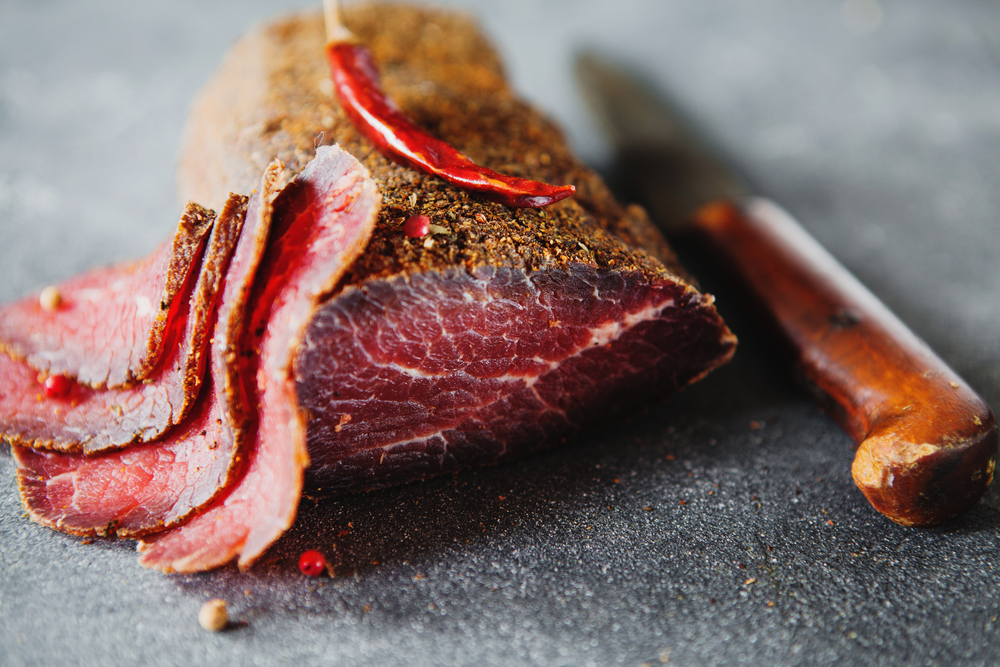Salting, smoking, pickling, brining, and corning are all curing methods that help flavor and preserve a variety of meats, fish, and vegetables. However, by definition, curing simply means to be preserved by salting. Why salt? Salt helps draw out water while simultaneously creating an environment that is not conducive to bacteria. Long story short, curing helps keep your food edible for longer while developing its flavor. Who can say no to that?
Related: What is Caramelizing and How Do You Do It?
For simplicities sake, we are going to go through the classic method of curing – dry curing. Essentially, you line a pan with parchment, lay down a bed of curing salt, top with your meat and cover it with an even layer of salt. Top meat with parchment and transfer to fridge for about a week. Remove, rinse, pat dry with paper towel and then wrap and truss with cheese cloth. Then set it up in a cool dark place, or a fridge you don’t open much, for a few weeks to a few months. When you’re ready to enjoy, remove cheese cloth and cut into thin slices, serve with fancy cheese and crackers and a nice bottle of wine, enjoy with friends or keep it all to yourself – then refrigerate what’s left.
That’s the gist and luckily there are a lot of recipes out there that work for beginners up to the pros. Though you can use a variety of meats, remember tougher cuts work well for curing because the salt tenderizes them and really brings out the flavor. Trim off any extra fat and if the piece you chose is large, prick all around with a slim steak knife. This will help the salt get deeper into the meat. And for ease of use, pick up a curing salt which can be mixed with other seasonings to kick up the flavor. Go on and try your hand at curing – the process may be long but the deliciousness that awaits will be worth it.


![Making Mealtime Matter with La Familia: Easy Sofrito [Video]](https://thelatinkitchen.com/wp-content/uploads/2015/10/sofrito-shutterstock__0-500x383.jpg)
![Easy Latin Smoothies: Goji Berry Smoothie [Video]](https://thelatinkitchen.com/wp-content/uploads/2015/12/goji_berry-shutterstock_-500x383.jpg)
















![Fun and Fast Recipes: Fiesta Cabbage Salad [Video]](https://thelatinkitchen.com/wp-content/uploads/2015/11/fiesta_cabbage_slaw-shutterstock_-500x383.jpg)









